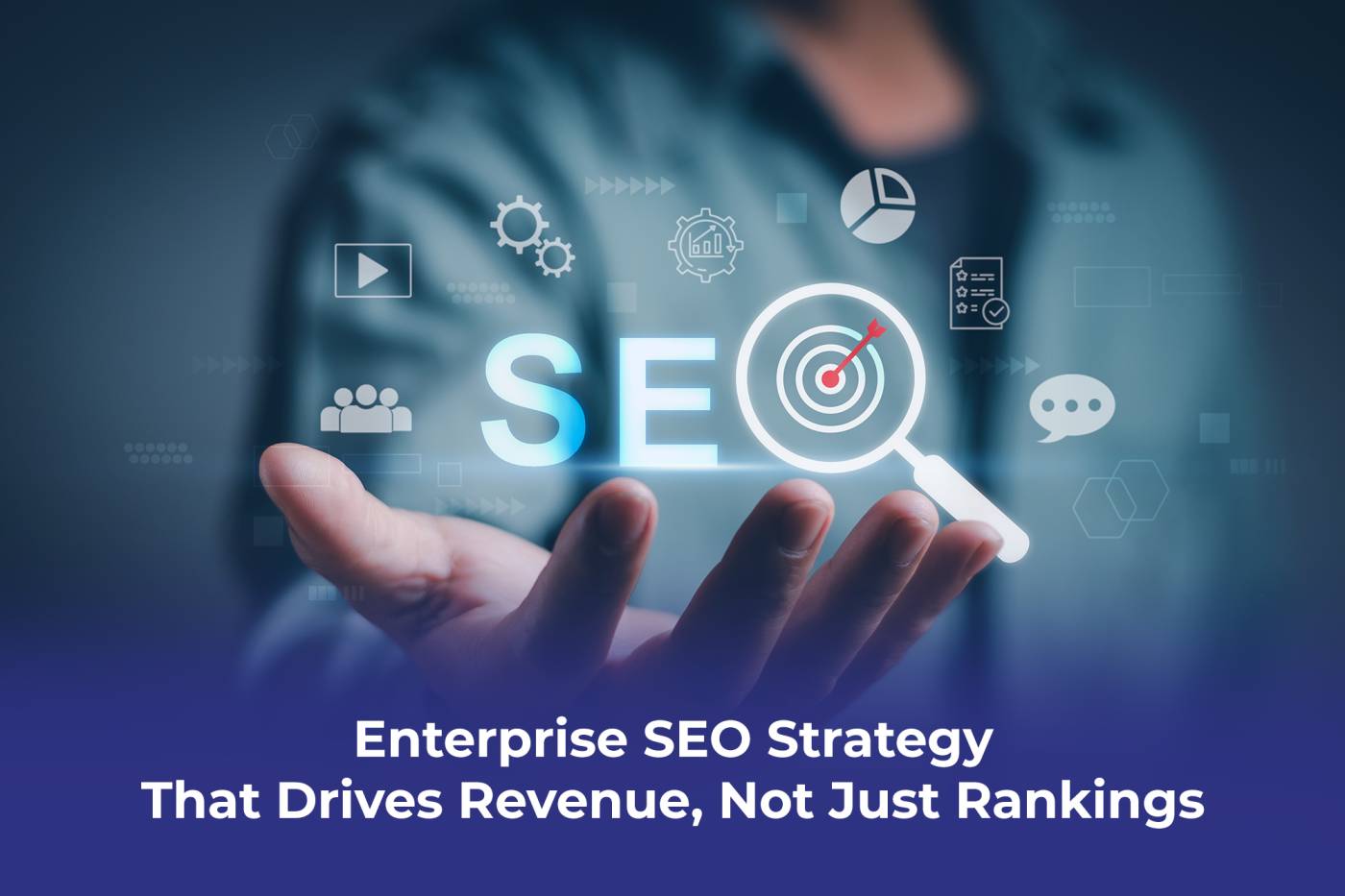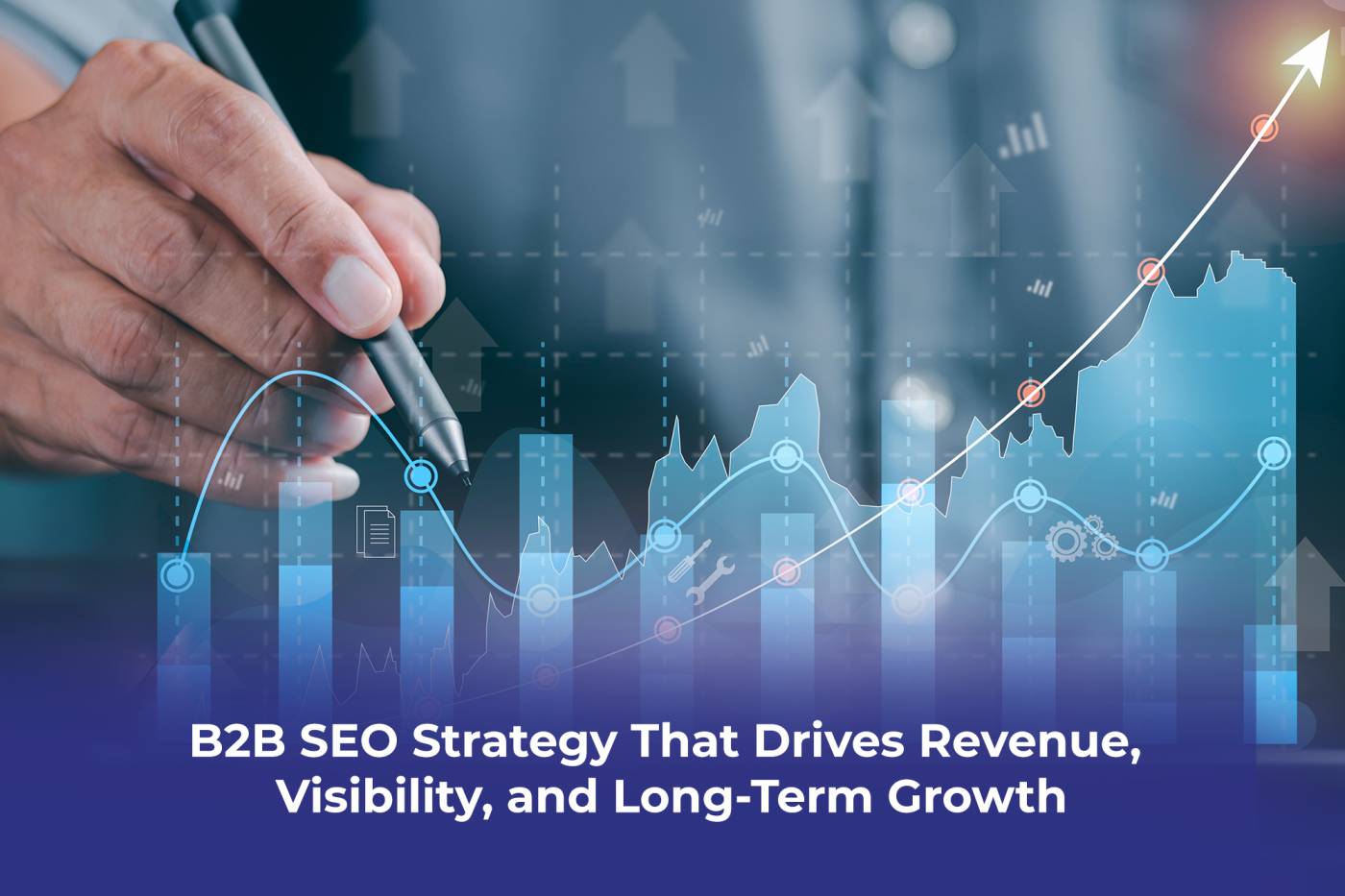Summary:
In 2025, enterprise SEO has moved far beyond keyword stuffing and traffic-chasing. Google continues updating its system. This includes focusing on helpful content, AI-driven results, and intent-based ranking.
These changes require a new strategy for large organizations. For CMOs and marketing leaders, the real challenge isn’t just appearing in search; it’s building an enterprise SEO strategy that drives revenue, market visibility, and brand authority. This blog explains how enterprises can move from rankings to results with SEO that scales.
Why Enterprise SEO Is Different from Standard SEO
Most businesses begin with basic SEO. They optimize one website with a few pages. They target local or niche keywords. Their goal is to improve visibility in organic search. Standard SEO typically involves:
- Keyword research and content creation for a limited scope.
- On-page optimization (titles, meta, internal linking).
- Backlink building and local SEO strategies.
- Technical fixes like site speed and mobile optimization.
This approach works well for small to mid-sized businesses.
However, for global enterprises, SEO challenges multiply:
- Scalability → Optimizing tens of thousands of URLs across multiple markets and languages.
- Governance → Maintaining consistent brand messaging across distributed teams and regions.
- Revenue Alignment → Tying SEO outcomes directly to pipeline growth and business goals, not just vanity metrics like traffic.
- AI Search Integration → Ensuring visibility across platforms like Google SGE, ChatGPT, Perplexity, and other AI-driven engines.
In other words, enterprise SEO is different from traditional SEO. Traditional SEO focuses on ranking and visibility. Enterprise SEO aims to create a revenue engine that can grow globally. It also supports governance and long-term authority.
Key Components of a Winning Enterprise SEO Strategy
1. Intent-Driven Keyword Targeting
Enterprise buyers don’t just look for “solutions.” They ask questions like, “What is the best B2B SEO for growth?” or “How can I scale SEO in different regions?”
Your SEO strategy must map queries to buying stages:
- ToFu: Informational searches (guides, insights).
- MoFu: Evaluation-focused searches (case studies, comparisons).
- BoFu: High-intent searches (partner selection, services).
2. Content at Scale with EEAT
Google’s EEAT (Experience, Expertise, Authoritativeness, Trustworthiness) is central in 2025. Enterprises need:
- Expert-driven blogs and case studies.
- Author bios with credentials.
- Data-backed insights and references.
This ensures your SEO isn’t just visible but also trusted.
3. Technical Infrastructure for Scale
For enterprise websites, technical SEO makes or breaks growth:
- Automated internal linking to maintain silo structures.
- Crawl budget optimization for massive sites.
- AI-ready structured data for visibility in Search Generative Experience (SGE) and LLM-based engines.
4. Revenue Attribution and SEO ROI
A successful enterprise SEO strategy links SEO to real business outcomes:
- Track pipeline contribution, not just clicks.
- Measure SQLs (sales-qualified leads) from organic.
- Attribute revenue growth to specific content and keywords.
Enterprise SEO in 2025: The Latest Shifts
- Google’s Helpful Content Update → SEO must prioritize depth, authority, and user-first content.
- AI Search Engines → Visibility now depends on intent coverage, FAQs, and structured content for LLM retrieval.
- Topical Authority Over Keywords → Ranking power comes from well-built content ecosystems (pillar + clusters).
- Localization for Global Enterprises → Multi-market SEO with local content relevance is critical for scalability.
An enterprise SEO strategy in 2025 must be designed for both Google and AI-driven discovery engines.
FAQs
Q1: How is enterprise SEO different from local or small business SEO?
Enterprise SEO operates at scale, requiring governance, automation, and strategy alignment with revenue. Unlike small business SEO, this approach addresses multi-site and multi-market challenges.
Q2: Can enterprise SEO directly influence revenue?
Yes. With good tracking and attribution, businesses can link SEO content to leads, opportunities, and closed deals. This makes SEO a way to grow revenue.
Q3: What’s the biggest SEO ranking factor in 2025?
Beyond technical hygiene, intent coverage, and EEAT signals are now the most critical ranking factors for enterprise SEO.
Ranking for keywords is no longer enough. A scalable, intent-first SEO strategy helps your brand appear in search results and achieve real business goals.
At Proton Effect, we offer SEO Optimization and Strategy services. We build strong frameworks that connect SEO with business growth, authority, and long-term visibility.




